I break down athletic pubalgia — the groin-adductor complex injury that preys on explosive wingers and creative tens. With repeated cutting, twisting and ball-striking, profiles like Barcelona’s Lamine Yamal and Chelsea’s Cole Palmer sit squarely in the danger zone. Structures at risk include the rectus abdominis–adductor aponeurosis, pubic symphysis and surrounding fascia. Even with conservative care, realistic returns often drift far beyond optimistic estimates. A fresh muscular scare for a leading striker elsewhere reinforces how quickly workloads can tip athletes over the edge. Expect sports science teams to throttle minutes and tweak kicking loads to keep stars on the pitch.
A detailed explainer from football performance and medical analysts has spotlighted athletic pubalgia mechanisms in high-output attackers, name-checking Lamine Yamal (Barcelona) and Cole Palmer (Chelsea) as archetypes most exposed by relentless acceleration, deceleration, and ball-striking demands. In parallel, one prominent centre-forward was withdrawn at half-time for muscular tightness and awaits assessment, while a senior midfielder has returned to train with an elite academy group to maintain fitness between moves. Taken together, the conversations across medical rooms, training grounds, and media desks have pushed groin-adductor risk management to the front of club agendas this week.
So what actually is athletic pubalgia? And why are athletes like Lamine Yamal and Cole Palmer most prone to the injury? Sam and I break down the structures, return to play timelines, and how sharp movements + repeated ball-striking put players like Yamal & Palmer in the danger
@physioscout
Impact Analysis
If you support Barcelona or Chelsea, brace yourself — athletic pubalgia is the groin riddle that ruins best-laid plans. The pathology targets the rectus abdominis–adductor aponeurosis and nearby fascial planes right where wingers and creator-forwards live: constant chops inside, hip flexion at pace, and repeated instep drives. In match rhythm, that adds up to asymmetric overload at the pubic symphysis. Once symptoms bite — groin pain on cutting, soreness after striking, stiffness on the turn — players can look fine for 20 minutes before falling off a cliff, the classic boom-bust pattern that wrecks rotation.
Conservative care is sold as 2–6 weeks, but in reality elite return-to-perform trends skew longer. True tolerance for high-velocity kicking often isn’t back until 8–12 weeks, and if surgery enters the chat, 12–20 weeks isn’t extreme. For teams built around Yamal’s width manipulation or Palmer’s half-space creativity, every missed week compounds: set-piece threat drops, pressing triggers get delayed, and opponents happily funnel attacks into low-value crossings. Depth charts won’t save you if the system’s keystones lose their snap. Even a minor muscular scare to a top striker elsewhere underlines the theme: once loads outrun tissue capacity, timelines obey biology, not wishful thinking.
Reaction
Fan sentiment split fast. Barcelona supporters pleaded for caution with Yamal — “wrap him in cotton wool” vibes — while rival fans rolled their eyes, calling it the predictable cost of riding a teenager that hard, that often. Chelsea’s timeline debates were even spikier: some insisted Palmer is “ironman fit,” others flagged his workload spikes and infamous adductor twinges across congested runs. The groin topic always ignites tribal takes: one camp posts rehab clips to prove all is well; the other dredges up historical cases that snowballed into months out.
Analytical corners of social media went long on mechanism: slow-mo cut-ups of inside-out chops, freeze frames of hip rotation at ball contact, GPS heat maps of repeated high-intensity decels. Meanwhile, rival fans (not remotely subtle) gleefully predicted derailed autumn and winter windows, needling about how both teams become painfully one-paced without their primary chance-creators. Beneath the noise, the smartest voices converged on one truth: if symptoms appear, rushed minutes equal setbacks — and those setbacks turn into seasons defined by “almost back” updates.
Social reactions
❤️🫂 Trent Alexander-Arnold pays tribute to Diogo Jota with a letter and a controller. 🕊️
Fabrizio Romano (@FabrizioRomano)
🚨 EXCL: Gary O’Neil withdraws himself from process to become next Wolverhampton Wanderers head coach after initial talks. Understood 42yo felt opportunity to make shock return to Molineux not right for him at this time. #WWFC search ongoing
David Ornstein (@David_Ornstein)
Hi 😭 since you’re replying to everyone, how many likes to perform 10 Kilo or ACL with you on stage at OAU? 🙏❤ Been a fan for 7+ years abeg, make my dream come true Idolo 🖤🔥
》▪︎《 (@Phaydszn)
Prediction
Clubs who get ahead of this will act before pain shouts. Expect Barcelona to ration Yamal’s double-sessions, trim maximal ball-striking volumes, and cap late-game sprints when score state allows. Chelsea’s staff can mirror that with micro-dosed adductor loading, anti-rotation core work, and stricter red-flag thresholds in congested weeks. If either player reports classic AP soreness — pain on resisted sit-up or adductor squeeze — the smart play is preemptive shutdown: 10–14 days of load deload, then controlled reintroduction with reduced strike counts and graded cuts.
Worst-case? Symptoms linger, imaging stays inconclusive (as it often does), and both camps face the surgery-or-suffer dilemma, pushing realistic return into the 12–20 week band. Best-case? Early intervention prevents chronicity, preserving their burst through the winter grind. One prominent striker’s recent half-time withdrawal for muscular tightness is a cautionary tale: even Grade 1 issues can balloon to 4–6 weeks if layered onto heavy game states. Expect more conservative substitutions, earlier hook minutes for stars, and a premium on utility attackers who can soak up high-load sets without breaking the adductor chain.
Latest today
- Xabi Alonso delays injury call until matchday training as Leverkusen wobble
- Xabi Alonso outlines striker-heavy plan: Endrick to create space for Mbappé, Vini and Jude
- Fede Valverde misses Real Madrid training before Sevilla - availability in doubt
- Fede Valverde a serious doubt for tomorrow - rivals smell blood as Madrid wobble
Conclusion
The headline isn’t panic — it’s prudence. Athletic pubalgia is the quiet tax on modern attacking football, and profiles like Lamine Yamal and Cole Palmer pay the highest rate. Ignore the optimists promising two-week miracles; elite return-to-perform demands that cutting, striking, and re-accelerating feel automatic again, not merely tolerable. That takes time. From what I’m hearing across medical rooms, the winning strategy is simple: measure the strikes, manage the cuts, and don’t chase minutes when the groin whispers “enough.”
Rivals won’t mind if Barcelona and Chelsea learn that lesson the hard way. But if both clubs lean into data-led load control now, the spring payoff is enormous: fresher legs, preserved acceleration, and stars still decisive when trophies are decided. The margin between “niggle” and “season-shaper” is razor-thin in the groin complex. Respect it, and you keep your game-breakers on the grass. Disrespect it, and you spend the run-in explaining why everything suddenly looks a yard slower.







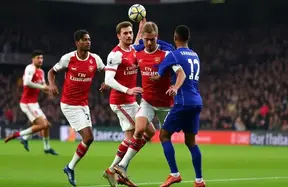
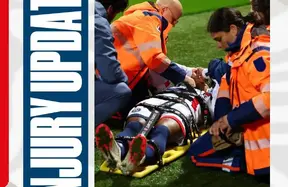

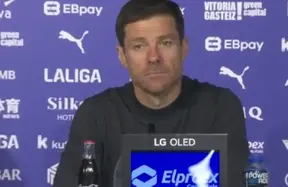
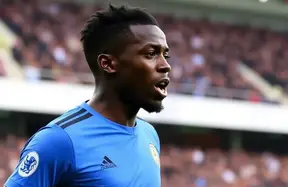
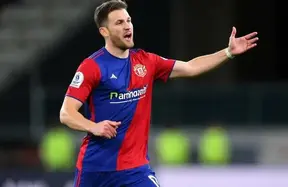
Fabrizio Romano
❤️🫂 Trent Alexander-Arnold pays tribute to Diogo Jota with a letter and a controller. 🕊️
David Ornstein
🚨 EXCL: Gary O’Neil withdraws himself from process to become next Wolverhampton Wanderers head coach after initial talks. Understood 42yo felt opportunity to make shock return to Molineux not right for him at this time. #WWFC search ongoing
》▪︎《
Hi 😭 since you’re replying to everyone, how many likes to perform 10 Kilo or ACL with you on stage at OAU? 🙏❤ Been a fan for 7+ years abeg, make my dream come true Idolo 🖤🔥
Dara Ó Briain
This is genuinely insane. I mean, just worryingly divorced from any reality. How desperate are people to believe this nonsense?
Sky Sports Premier League
Alex Oxlade-Chamberlain is back training at Arsenal as he plots his next move 🚨 The 32-year-old will predominantly work with the Under-21s as he looks to maintain his fitness.
Football on TNT Sports
David Raya made 7 saves against Man United in the opening game of the Premier League season. He's averaged 1 per game in the 9 games since then...
Bill Edgar
Managers in April 2002: Everton: David Moyes Cheltenham: Steve Cotterill Celtic: Martin O’Neill Managers today: Everton: David Moyes Cheltenham: Steve Cotterill Celtic: Martin O’Neill
Nicholas
ᯓ★ˎˊ˗
They’re babying a man with 5 kids
Jamie🌳
Fair fucks can’t argue with that